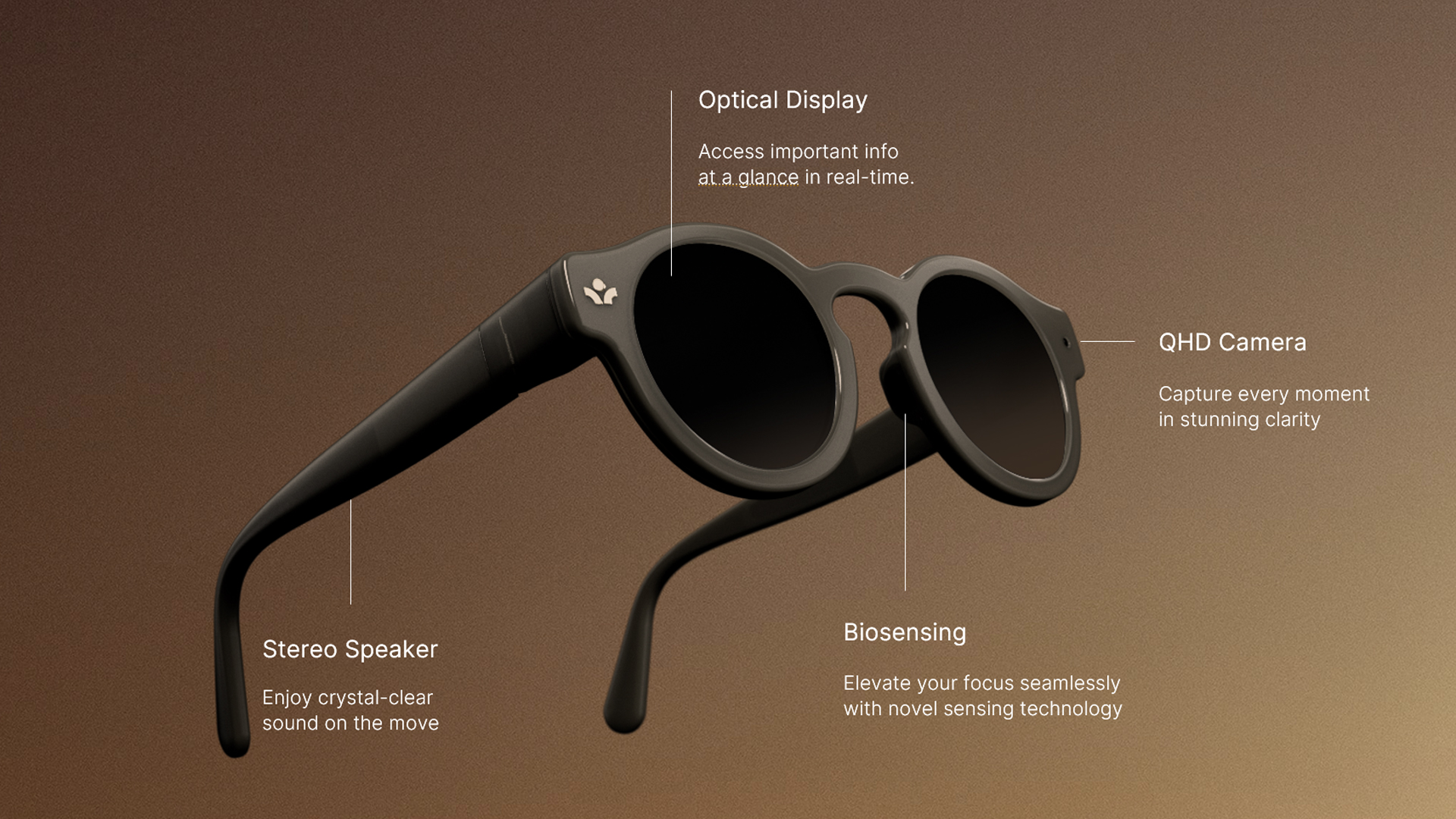Journey Lens is reviving an old smart glasses idea to solve a modern problem
What if Google Glass made sense?

If there is a villain in the story of our distracted culture, it’s not necessarily the smartphone – it’s what lives inside of it.
“Smartphones by themselves are not addictive, it’s the incentive behind social media that tries to maximize attention that makes them addictive. When you are trying to access a simple thing on a smartphone, the interface is designed in such a way that it’s easy to get sucked into doom scrolling,” said Farbod Shakouri, Co-Founder & CEO at Phantom Technology when I spoke to him a couple of weeks ago.
Shakouri and his company have a solution, and it harkens back to the OG wearable glasses: think Google Glass without the embarrassment and a lot more native artificial intelligence.
Journey Lens, which goes on preorder today, weighs just 40 grams (Meta Ry-Ban Wayfarers, by contrast, weigh about 50g) and look like a fashionable pair of glasses or sunglasses. But they hide an information secret: a small micro-LED screen fed to the eye through a prism in the upper left or right of the frames. It's designed to deliver necessary information and app access but is actually focused more on keeping a helpful eye on you.
In addition to the screen, Journey Lens includes a sensor in the nose bridge that can, sense distraction and attention. Shakouri claimed the frames can “monitor and guide your focus.” Phantom is calling this feature 'Focus Compass', and it watches your daily routine and keeps track of when you become distracted.
The frames include a single microphone (not far field, which might mean some issues with it hearing you outdoors) so you can ask the AI (powered by ChatGPT-4o with other LLMs to come) questions about what you see through the lens’ 2K camera.

You can also use the Journey Lens to life journal but in a more interactive and conversational way. Shakouri described a scenario in which you climb a mountain, and the Journey Lens AI asks you, unprompted, through its stereo speakers, “How was the climb?” You might tell the lens that the journey was tough, but it was worthwhile, and you want to remember it. The lenses would then automatically grab photos and a short video to make an album.
Get daily insight, inspiration and deals in your inbox
Sign up for breaking news, reviews, opinion, top tech deals, and more.
As for how the lens knows what you are doing, it uses an onboard neural net to interpret images and then works with the companion app and large language model on your phone to deliver full understanding. Shakouri told me your data will never go to the cloud.
Like Google Glass before it, Journey Lens doesn’t try to augment your reality, Instead, the display prism is far from the center of either lens and you would need to glance up to the left or right (depending on where you have the prism) to view what will look like an iPad screen held at arm’s length.
Having used Google Glass for a time, I understand this interaction but I remember how it also felt less than natural. Hopefully, the glance on Journey Lens isn’t too exaggerated and the visuals are clear enough for a quick glance. At least I know they’ll be bright. Phantom claims the Journey Lens screen outputs up to 4,000 nits of brightness.
Since the tiny display is housed in standard-looking smart glasses (available in multiple styles), perhaps no one will notice that little prism. It’ll be nicely hidden on sunglasses. However, even on clear lenses (prescription or standard), the upper portion of the lens will be tinted to hide the screen technology.
Journey Lens will arrive next year and should list for $195 / £150 (around AU$290), with pre-orders starting today. If that holds up, it’s significantly cheaper than competing smart frames from Amazon (Echo Frames) and Meta. There is a catch, though. If you want access to the smart companion, Life Journal, and the full array of your onboard apps, you’ll need to sign up for a monthly subscription fee that, depending on which services you choose, will range from $7 to $18 a month.
With full AR-ready lenses expected this year from companies like Meta and next year from Google and Samsung, Phantom may have mistimed its, ahem, Journey. After all, its imaging technology is decidedly first-gen but also potentially less intrusive than what some of these next-gen AR/AI lenses will bring.
Maybe the answer to distractibility is not to combine a technology overlay with your whole world but to keep the tech in its own corner and only let it peek its head out when you glance in its direction or call it by its name.
You might also like

A 38-year industry veteran and award-winning journalist, Lance has covered technology since PCs were the size of suitcases and “on line” meant “waiting.” He’s a former Lifewire Editor-in-Chief, Mashable Editor-in-Chief, and, before that, Editor in Chief of PCMag.com and Senior Vice President of Content for Ziff Davis, Inc. He also wrote a popular, weekly tech column for Medium called The Upgrade.
Lance Ulanoff makes frequent appearances on national, international, and local news programs including Live with Kelly and Mark, the Today Show, Good Morning America, CNBC, CNN, and the BBC.